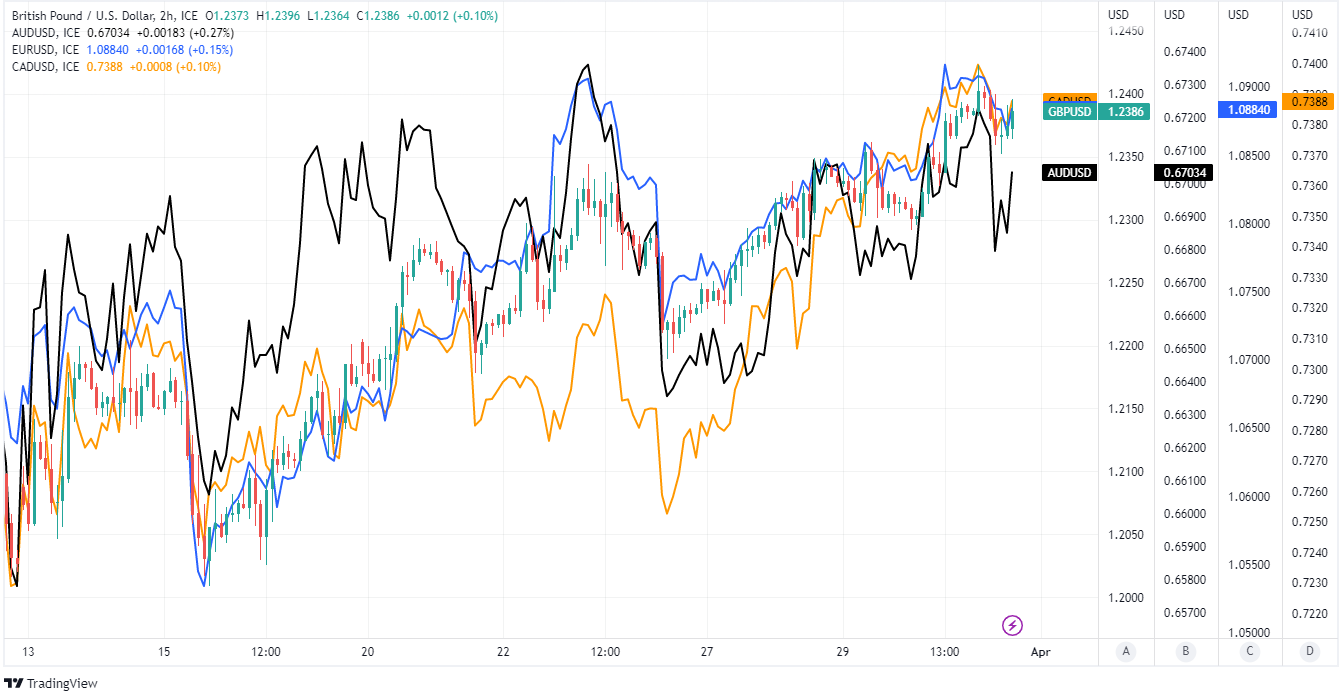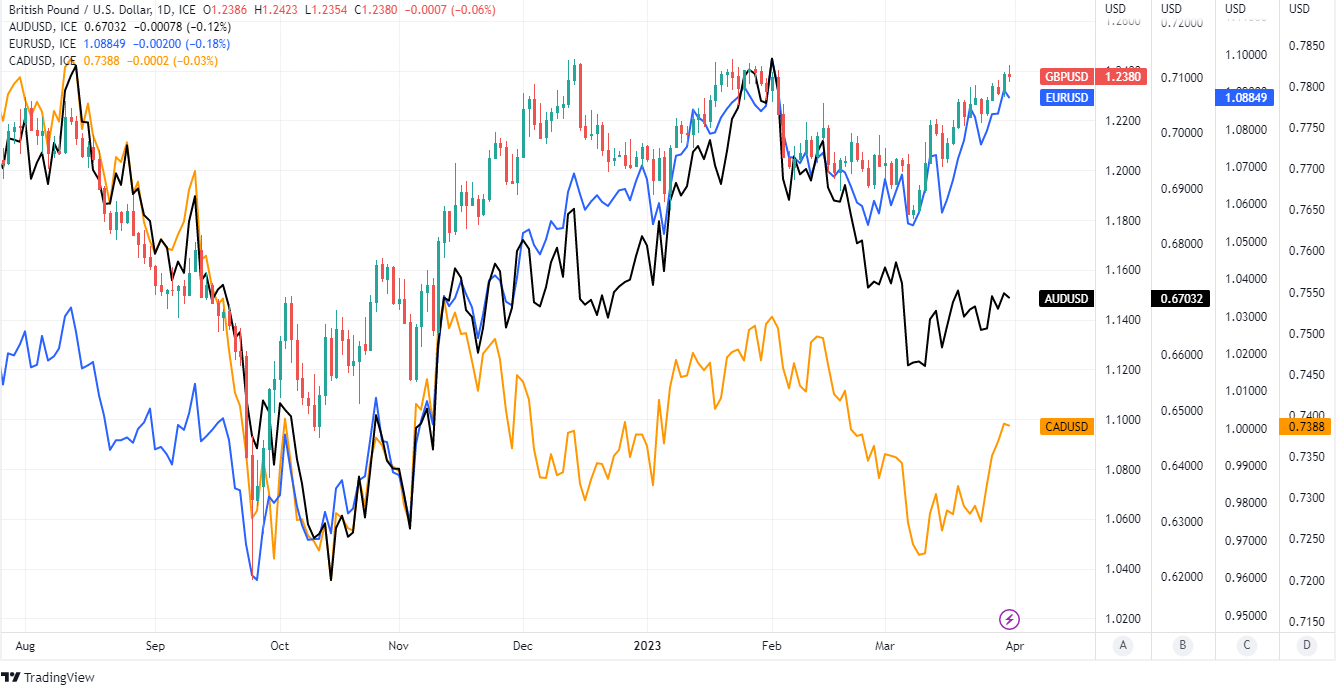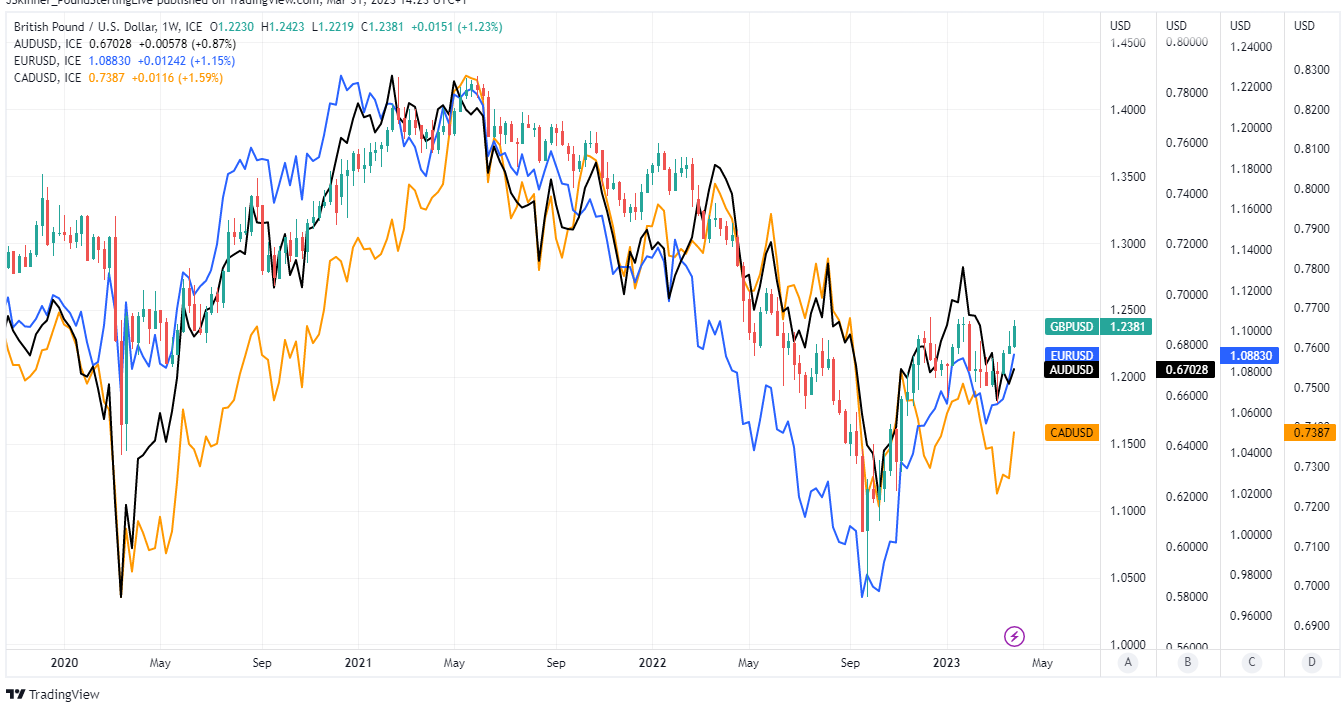GBP/USD Rate Helped after Fed's Favourite Inflation Gauge Eases
"There aren’t clear short-term drivers to buck the bullish GBP trend at the moment" - ING.

Image © Adobe Images
The Pound to Dollar exchange rate pared earlier losses to trade buoyantly near the year's highs ahead of the weekend after the Federal Reserve's (Fed) preferred inflation measure fell further than was expected in the latest update, curbing a corrective rebound by the greenback.
Dollar exchange rates fell from intraday highs while the Pound, Euro and other currencies rose on Friday after the Bureau of Economic Analysis said the Core Personal Consumption Expenditures Price Index rose 0.3% last month to record only a 4.6% increase for the year to the end of February.
The consensus among economists had looked for a 0.4% February increase to keep the annual pace of Core PCE inflation unchanged at 4.7%, although widespread and noteworthy declines in the pace of price increases across categories delivered a tamer result on the day.
"0.4% is no one’s idea of acceptable. Only one more round of PCE data will be released before the May meeting, but even if the numbers are spectacularly good, they won’t be enough, alone, to stop the Fed raising rates again," says Ian Shepherdson, chief economist at Pantheon Macroeconomics.
Durable goods inflation turned negative in February and non-durable goods inflation fell by more than half but even more notable for Federal Reserve policymakers were likely the halving of services price inflation and declines in the cost of food, energy goods and energy services.
 Above: Pound to Dollar rate shown at 2-hour intervals alongside AUD/USD, EUR/USD and CAD/USD.
Above: Pound to Dollar rate shown at 2-hour intervals alongside AUD/USD, EUR/USD and CAD/USD.
Live GBP/EUR Money Transfer Exchange Rate Checker | ||
Live Market Rate: | get quick quote | |
Corpay: | ||
Banks: Median Low | ||
Banks: Median High | ||
These data are based on the spread surveyed in a recent survey conducted for Pound Sterling Live by The Money Cloud. | ||
All of these developments suggest the Fed is making progress in its effort to drive the main PCE Price Index, which fell from an annual 5.3% to 5% in February, back to the 2% target but some economists say they won't necessarily prevent another increase in interest rates next month.
"These data show some signs of consumers responding to higher rates, and the downside surprise in core PCE is a welcome development for the Fed, although the monthly pace of increase still remains too fast to be consistent with on-target inflation," says Katherine Judge, an economist at CIBC Capital Markets.
The Fed raised its interest rate to between 4.75% and 5% last Wednesday but the forecasts suggested that Federal Open Market Committee members saw only one further increase as necessary owing to the effect of the recent failure of Silicon Valley Bank and others.
"They were anticipating some tightening of lending conditions but we're not necessarily seeing it in the data as yet, and the Fed would need to hike more if that did not materialise," says Sid Bhushan, an economist at Goldman Sachs.
Chairman Jerome Powell said in last week's press conference that more stringent lending standards and a lesser availability of credit would likely hamper the economy and dampen inflation to an unknown extent in the months ahead.
 Above: Pound to Dollar rate shown at daily intervals alongside AUD/USD, EUR/USD and CAD/USD. Click image for closer inspection. (If you are looking to protect or boost your international payment budget you could consider securing today's rate for use in the future, or set an order for your ideal rate when it is achieved, more information can be found here.)
Above: Pound to Dollar rate shown at daily intervals alongside AUD/USD, EUR/USD and CAD/USD. Click image for closer inspection. (If you are looking to protect or boost your international payment budget you could consider securing today's rate for use in the future, or set an order for your ideal rate when it is achieved, more information can be found here.)
"The dynamic between inflation and the labour market continues to be the prime consideration for the Fed and I think the market is going to have to reassert a higher for longer expectation once again – this will lead to yet more volatility in rates," says Neil Wilson, chief market analyst at Finalto Trading.
The Fed's entertainment of "credit tightening" over interest rate tightening has been negative for the U.S. Dollar and potentially because it deprives the greenback of additional or otherwise better-sustained increases in bond yields.
Dollar sales have helped lift the Pound this week but Sterling also benefited on Friday when the Office for National Statistics revised its estimate of economic growth up to 0.1% for the final quarter and announced a sharp fall in the balance of payments deficit for the same period.
"We have been stressing how markets are rewarding currencies that can count on domestic tightening prospects despite financial turmoil, and the pound is indeed one of those," says Francesco Pesole, a strategist at ING, who sees GBP/USD having scope to reach 1.25 over the next week.
"While our more dovish view for the BoE compared to the ECB keeps us bullish on EUR/GBP for the remainder of the year (we still target 0.90 in the second half), there aren’t clear short-term drivers to buck the bullish GBP trend at the moment. Cable [GBP/USD] is approaching some important levels," he adds.
 Above: Pound to Dollar rate shown at weekly intervals alongside AUD/USD, EUR/USD and CAD/USD. Click image for closer inspection. To optimise the timing of international payments you could consider setting a free FX rate alert here.
Above: Pound to Dollar rate shown at weekly intervals alongside AUD/USD, EUR/USD and CAD/USD. Click image for closer inspection. To optimise the timing of international payments you could consider setting a free FX rate alert here.